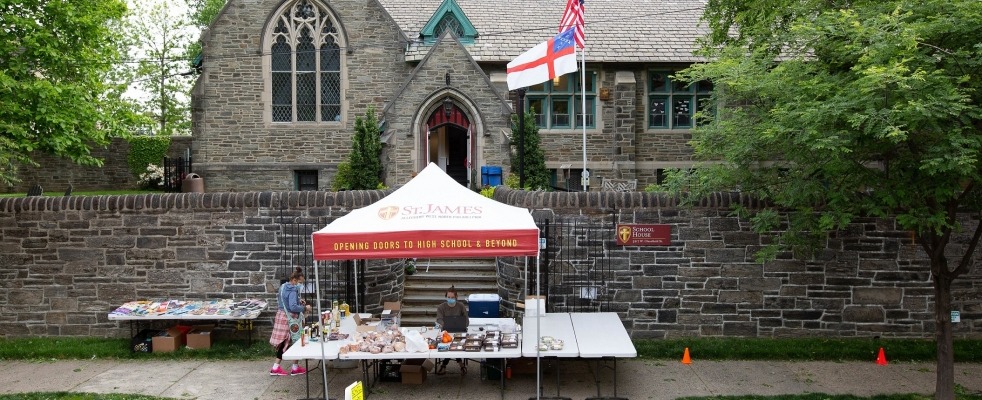To end the week on an upbeat note, we share a story of the repurposing of a long-closed church property in North Philadelphia, via the Episcopal Church Foundation.
On his first visit to the property that would become St. James School, [School Head] David [Kasievich] remembers hearing that the school side of the campus was for sale. In a not unfamiliar story, the Church of St. James the Less, an historic Episcopal Church founded in 1846, had closed in 2006, following a long period of conflict between the Diocese of Pennsylvania and the parish.
“St. Mark’s in Center City, which had a long relationship with St. James, was watching all this and felt impelled to do something,” says David. “They said, ‘Let’s not sell the property. Let’s think how it might be used to benefit the neighborhood. Let’s re-think ministry, and instead of focusing on the deficits, find ways to let the many assets on and off the property grow and flourish.’”
In 2008, the diocese agreed to give St. Mark’s two years to develop a plan for the property that would be self-sufficient. Sean Mullen, St. Mark’s rector, and parishioner Dr. Audrey Evans began dreaming big about how the property could be used. Conversations with St. James’s neighbors and an extensive feasibility study pointed to the need for a quality neighborhood school.
Their first on-the-ground effort was a summer camp for neighborhood children. Sean tapped diocesan youth minister, Andrew Kellner, to help lead the effort, and City Camp opened on the property in 2010 with the help of scores of St. Mark’s volunteers. An afterschool program for children in grades three through five opened in the fall, and in 2011, St. James Episcopal School welcomed its first class of fifth grade students from the neighborhood.
… As they met neighbors, they learned that most had never been inside the church or on the grounds. “Many told us that they had been chased off the property when they were children,” says David. “While the church was still open in the 80s and 90s, the gates were often locked to the cemetery and the buildings, so our first campaign slogan was Help Unlock the Gate.
They began unlocking all the gates to everything when they were on the property. “And we had picnics and barbecues,” says David. “We invited the community association to hold their meetings in our schoolhouse once a month; we started worshipping in the church; we had an Easter egg hunt.” And they began to hear from some of the long-time neighbors, people in their 80s and 90s, who remembered that the parish was active in the community in the 50s and 60s. These neighbors talked about the fun, the prayers, the Sisters of St. Margaret and the roller skating parties in the basement. “It brought them back to what it once was.”
In addition to opening the gates, they engaged the neighborhood, going door-to-door to introduce themselves. “I’d take [president of the RAH Civic Association] Rosalie [Cooper] with me, and we would start talking up the school and leave flyers,” says David. “Sometimes I’d take some water ice (Philly’s version of Italian ice) and set up on the corner of a block and just talk with people. That’s how we recruited the first class.”
… “The good news/bad news is that there are so many kids in Philadelphia that need St. James,” says David. He sees future students coming from northeast Philadelphia along Route 1, where the city’s poor are currently moving. And they are thinking that a house or two in that new area could provide space where teachers can live and be a presence in the community.
The rest of the story is available here. You can read more about St. James School at its website.
Image source: The Episcopal Church Foundation

